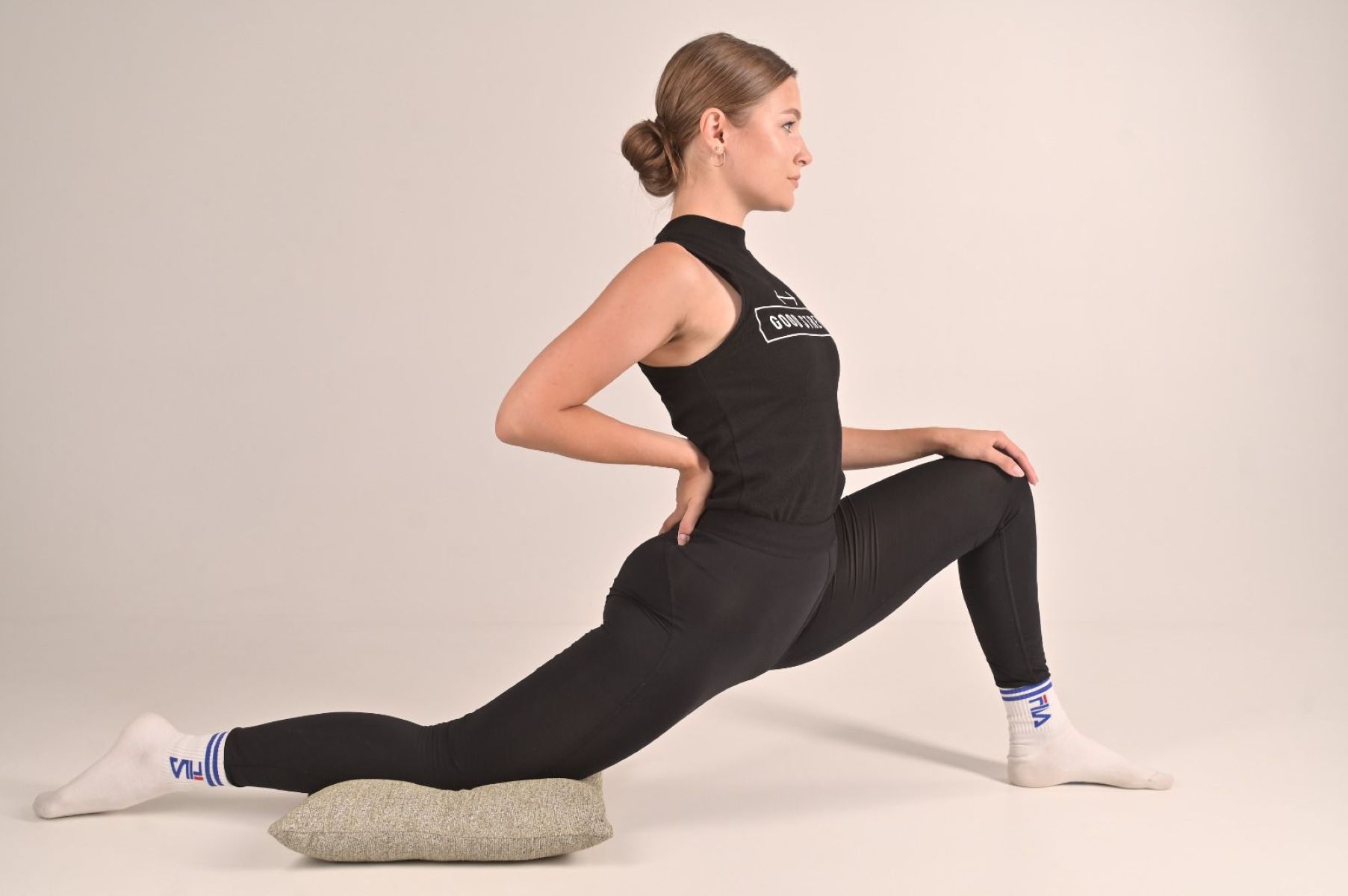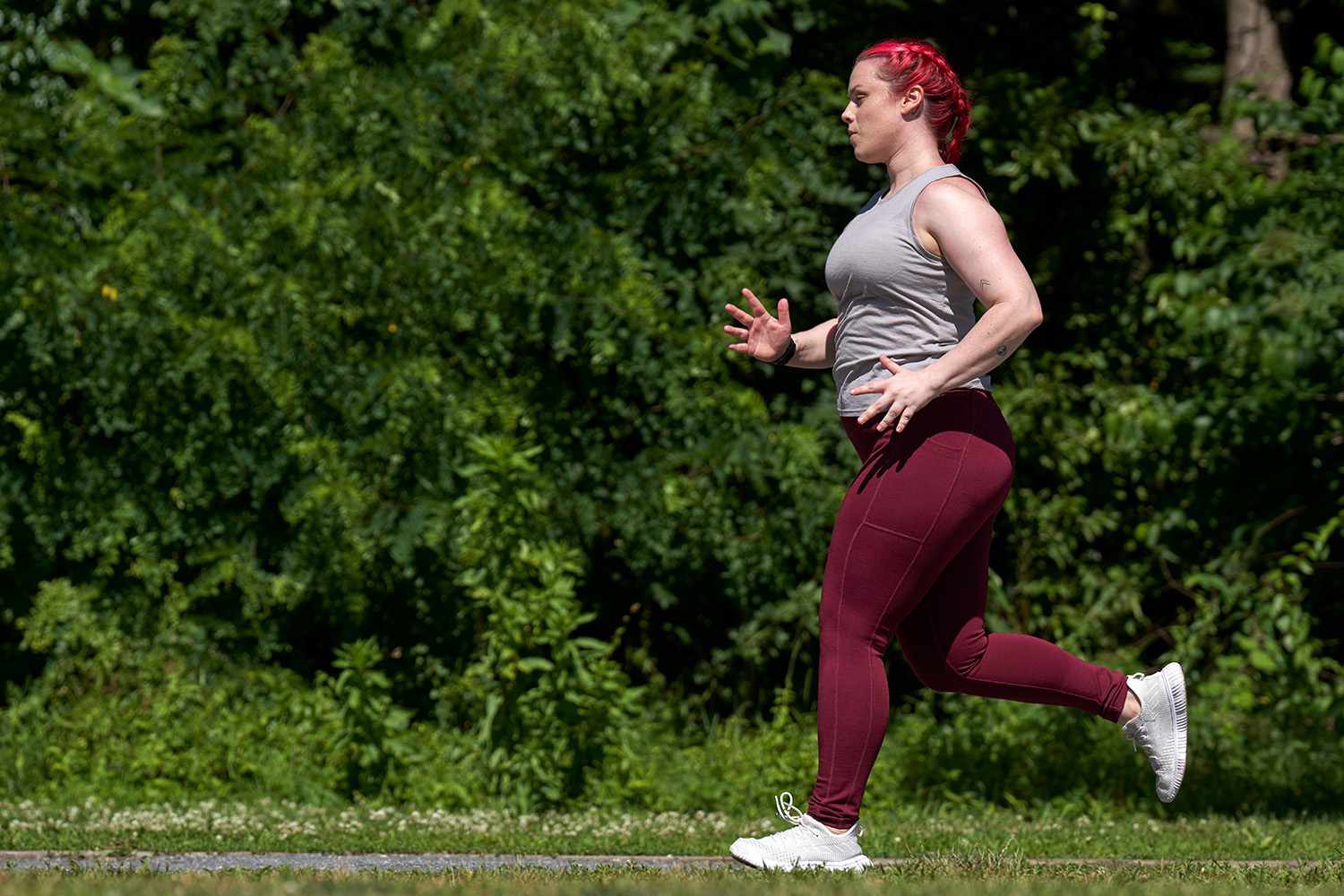Home>Misc>Featured>How Long Should I Stretch Before A Workout


Featured
How Long Should I Stretch Before A Workout
Modified: August 19, 2023
Discover the perfect stretching routine to enhance your workout. Learn how long to stretch before exercising and optimize your fitness routine with our featured tips.
Introduction
Stretching before a workout is a crucial yet often overlooked part of any exercise routine. Many people prioritize activities such as warming up or diving straight into their workout, neglecting the benefits that a proper stretching routine can offer. However, taking the time to stretch before a workout can greatly enhance performance, reduce the risk of injury, and improve overall flexibility.
Stretching is the process of elongating muscles and tendons through various techniques. It helps to increase blood flow to the muscles, improve joint range of motion, and prepare the body for the physical demands of exercise. Incorporating stretching into your pre-workout routine not only primes your muscles for activity but also ensures proper alignment and enhances muscle balance.
When done correctly, stretching can optimize your athletic performance and help you reach your fitness goals more efficiently. But how long should you stretch before a workout? Is there a specific duration that is ideal for everyone? The answer varies depending on several factors, including the type of stretching technique used, individual flexibility levels, and the specific workout or activity you are about to engage in.
In this article, we will explore the different types of stretching techniques, examine the factors to consider when determining stretching time, and provide general guidelines for pre-workout stretching duration. By understanding the importance of stretching and implementing the right stretching routine, you can maximize the benefits of your workout and prevent injuries along the way.
Importance of Stretching Before a Workout
Stretching before a workout offers numerous benefits that contribute to a safer and more effective exercise session. Let’s explore some of the key reasons why stretching should be an essential part of your pre-workout routine:
- Increased Flexibility: Regular stretching helps improve your flexibility by increasing the extensibility of muscles and tendons. This allows for a greater range of motion in your joints, enabling you to perform exercises with proper form and enhance your overall athletic performance.
- Injury Prevention: Stretching helps to mitigate the risk of injuries during exercise. By preparing your muscles and tendons for the physical demands of your workout, stretching can reduce the likelihood of strains, sprains, and muscle pulls. It also helps improve muscle coordination and balance, further reducing the risk of accidents.
- Improved Blood Flow: Stretching promotes better circulation throughout your body. By increasing blood flow to your muscles, it delivers essential nutrients and oxygen, allowing them to function optimally during exercise. This enhanced blood flow also aids in the removal of waste products, reducing the build-up of lactic acid and preventing muscle fatigue.
- Enhanced Performance: When muscles are properly stretched, they can generate more power and force. This can lead to improved performance in activities such as weightlifting, running, or any sport requiring strength and explosive movements.
- Psychological Preparation: Stretching not only prepares your body but also your mind for exercise. It provides a valuable opportunity to focus on your breathing, center yourself mentally, and set the tone for a successful workout session.
These are just a few of the many benefits that stretching offers before a workout. Incorporating stretching into your routine can make a significant difference in your overall fitness journey, allowing you to push yourself further and achieve better results.
Different Types of Stretching Techniques
There are various stretching techniques that can be used before a workout, each with its own unique benefits and purposes. Familiarizing yourself with the different types of stretching can help you tailor your pre-workout routine to your specific needs. Let’s take a look at some of the most common stretching techniques:
- Static Stretching: This is the most common type of stretching, where you hold a stretch in a specific position for a prolonged period. Static stretching helps improve overall flexibility by elongating muscles and increasing joint range of motion. It is typically done after a workout, but can also be beneficial when performed before exercise, as long as it is done gently and without bouncing.
- Dynamic Stretching: Dynamic stretching involves performing controlled movements that take your joints and muscles through a full range of motion. It helps warm up your muscles and prepares them for the specific movements you will be doing during your workout. Dynamic stretching often includes exercises such as arm circles, walking lunges, or leg swings.
- Proprioceptive Neuromuscular Facilitation (PNF) Stretching: PNF stretching uses a combination of contraction and relaxation phases to improve flexibility. It involves stretching a muscle to its limit and then contracting it against resistance for a few seconds. PNF stretching is often done with the help of a partner or a prop, making it effective in increasing both flexibility and strength.
- Isometric Stretching: Isometric stretching involves static holds combined with muscle contractions. It involves pushing against an immovable object or using your own muscles to create resistance, which helps to increase muscle flexibility and strength simultaneously.
It’s important to note that different stretching techniques are more suitable for different activities and individuals. Understanding these techniques can help you choose the most appropriate method for your specific needs and goals.
Static Stretching
Static stretching is one of the most commonly used stretching techniques, involving holding a stretch in a stable position for a period of time. This type of stretching helps improve overall flexibility and joint range of motion. Here’s what you need to know about static stretching:
- Technique: To perform static stretches, you assume a position that elongates the targeted muscle or muscle groups and then hold it for 15 to 60 seconds, without bouncing or jerking. You should feel a gentle pull or tension in the muscle, but it should not be painful.
- Benefits: Static stretching helps improve the flexibility and mobility of muscles and tendons. It can also help alleviate muscle tightness and reduce the risk of injuries, especially when done after a workout. Static stretching can improve overall posture, promote relaxation, and increase joint range of motion.
- Pre-Workout: Performing static stretching before a workout can help warm up the muscles and prepare them for exercise. However, it is important to note that holding a static stretch for too long before exercising can actually decrease muscle power and performance. Therefore, it is recommended to perform dynamic stretching alongside or instead of static stretching before a workout.
- Post-Workout: Static stretching is commonly done after a workout to aid in muscle recovery and improve flexibility. By stretching the muscles when they are warm and more pliable, you can increase their length and reduce post-exercise muscle soreness.
- Common Static Stretches: There are various static stretches that target different muscle groups. Some common examples include calf stretches, hamstring stretches, quadriceps stretches, and shoulder stretches. It’s important to choose stretches that target the specific muscles you will be engaging during your workout.
Static stretching can be a valuable addition to your pre- and post-workout routine. However, it is important to listen to your body and avoid overstretching or pushing past your limits, as this can lead to injuries. Remember to always warm up properly before static stretching and gradually increase the intensity and duration of your stretches over time.
Dynamic Stretching
Dynamic stretching is a form of stretching that involves controlled, repetitive movements that take your joints and muscles through a full range of motion. Unlike static stretching where you hold a stretch in a stationary position, dynamic stretching incorporates movement to warm up your body and prepare it for the specific movements of your workout. Here’s what you need to know about dynamic stretching:
- Technique: Dynamic stretches involve rhythmic movements that mimic the motions you will be performing during your workout. They are usually done in a fluid and controlled manner without any bouncing or jerking. Examples of dynamic stretches include arm circles, leg swings, high knees, walking lunges, and trunk rotations.
- Benefits: Dynamic stretching helps increase blood flow, raise core body temperature, and improve joint mobility. It activates the muscles and prepares them for the specific movements and intensity of your workout. Dynamic stretching can improve your agility, coordination, and athletic performance.
- Pre-Workout: Dynamic stretching is best performed as part of the warm-up routine before a workout. It helps to gradually increase heart rate, stimulate the nervous system, and prepare the muscles and joints for the upcoming physical activity. Dynamic stretching is particularly effective for activities that involve explosive movements or quick changes in direction.
- Post-Workout: While dynamic stretching is primarily used before a workout, it can also be incorporated afterwards to aid in recovery. Performing dynamic stretches after exercise can help cool down the body, lower heart rate, and gradually bring the muscles back to their resting state.
- Remember: It is important to perform dynamic stretches within your comfortable range of motion and avoid any excessive bouncing or jerking. Listen to your body, and if any movement causes pain or discomfort, modify or stop the stretch.
Dynamic stretching offers a dynamic way to warm up your body, increase flexibility, and enhance performance. When incorporated into your pre-workout routine, it can help optimize your exercise session and reduce the risk of injuries.
Proprioceptive Neuromuscular Facilitation (PNF) Stretching
Proprioceptive Neuromuscular Facilitation (PNF) stretching is a highly effective stretching technique that combines passive stretching and muscle contraction to increase flexibility. It involves working with a partner or using props to achieve a deeper stretch. PNF stretching is commonly used in athletic and rehabilitation settings due to its ability to enhance range of motion and improve muscle strength. Here’s what you need to know about PNF stretching:
- Technique: PNF stretching typically involves three phases: stretch, isometric contraction, and relaxation. It starts with a passive stretch, where your partner or a prop assists in taking the muscle to its end range of motion. Then, you contract the stretched muscle isometrically for a few seconds while your partner applies resistance. Finally, you relax the muscle and move into a deeper stretch with the assistance of your partner or prop.
- Benefits: PNF stretching helps improve both flexibility and strength simultaneously. By activating the Golgi tendon organ, PNF stretching triggers a relaxation response in the muscles, allowing for a deeper and more effective stretch. It also helps enhance neuromuscular coordination and balance.
- Pre-Workout: While PNF stretching is primarily used for post-workout flexibility and rehabilitation, it can be beneficial to incorporate it into your pre-workout routine for specific movements that require a greater range of motion. This can help activate the targeted muscle groups and improve muscle readiness for the upcoming exercise.
- Post-Workout: PNF stretching is commonly performed after a workout to increase flexibility and aid in muscle recovery. By elongating the muscles in a controlled manner, PNF stretching helps reduce muscle soreness and improve muscle tissue repair.
- Partner or Prop: PNF stretching often requires a partner or the use of props such as resistance bands or towels to assist in achieving a deeper stretch. It is important to communicate with your partner and ensure that the stretches are performed safely and without any pain or discomfort.
PNF stretching is a versatile technique that can be customized to target specific muscles and improve overall flexibility. Incorporating PNF stretching into your fitness routine, whether before or after a workout, can help you reap the benefits of increased range of motion and improved muscle strength.
Isometric Stretching
Isometric stretching is a stretching technique that combines static stretching with muscle contraction. It involves holding a stretch while simultaneously contracting the muscles involved in the stretch. This method helps improve flexibility, increase strength, and enhance overall muscle control. Here’s what you need to know about isometric stretching:
- Technique: To perform an isometric stretch, you assume a position that elongates the targeted muscle or muscle groups and then contract the muscles against the resistance of the stretch. You hold the contraction for around 10 to 15 seconds and then relax the muscles before moving into a deeper stretch. This process can be repeated for several repetitions.
- Benefits: Isometric stretching can improve flexibility and strength simultaneously. The muscle contraction during the stretch helps to override the stretch reflex, allowing for a deeper, more effective stretch. Isometric stretching also improves muscle control and stability.
- Pre-Workout: Isometric stretching is often performed as part of a warm-up routine before a workout. It helps to increase blood flow to the muscles, activate the nervous system, and prepare the muscles for the upcoming exercise. Isometric stretches can be particularly beneficial for activities that require strength and stability, such as weightlifting or martial arts.
- Post-Workout: Isometric stretching can also be integrated into a post-workout routine to aid in muscle recovery and improve overall flexibility. By holding the stretch and contracting the muscles, it helps to increase circulation and reduce muscle tension after exercise.
- Cautions: It’s important to approach isometric stretching with caution and avoid overexertion. Gradually ease into the stretch and avoid any sudden or jerky movements. Listen to your body and only stretch to your individual comfort level to prevent injury.
Isometric stretching is a valuable technique that can be incorporated into your pre- and post-workout routine to improve flexibility, strength, and muscle control. When performed correctly and with caution, isometric stretching can enhance your overall performance and help prevent injuries.
How Long Should I Stretch Before a Workout?
The duration of your pre-workout stretching routine can vary depending on several factors, including the type of stretching technique used, individual flexibility levels, and the specific workout or activity you are about to engage in. While there is no one-size-fits-all answer, here are some general guidelines to consider:
- Static Stretching: If you choose to incorporate static stretching into your pre-workout routine, it is recommended to hold each stretch for 15 to 60 seconds. This duration allows your muscles and tendons to elongate and promotes an increase in flexibility.
- Dynamic Stretching: Dynamic stretches are typically performed in a continuous and rhythmic manner. Aim for 5 to 10 minutes of dynamic stretching to properly warm up your muscles and prepare them for the movements of your workout.
- PNF Stretching: PNF stretches often involve multiple repetitions of a stretch, followed by muscle contractions and relaxation. Allow around 10 to 15 seconds for each isometric contraction and aim for 2 to 3 sets of each PNF stretch.
- Individual Variation: It’s important to consider your own flexibility and comfort levels when determining the duration of your pre-workout stretching. Some individuals may naturally require longer stretching times to achieve optimal muscle readiness, while others might need less time.
- Specific Workout: The nature of your workout or activity can also influence the length of your pre-workout stretching routine. If you are engaging in activities that require a greater range of motion or involve explosive movements, you may want to allocate more time for stretching to ensure proper muscle activation and injury prevention.
Remember, stretching is just one element of a well-rounded warm-up routine. It should be complemented with other activities such as light aerobic exercises or sport-specific movements to fully prepare your body for the workout ahead.
Ultimately, the duration of your pre-workout stretching should be guided by your own body’s needs and the requirements of your specific workout. Pay attention to how your muscles feel during and after stretching to gauge the appropriate duration for your individual situation.
Factors to Consider
When determining the duration of your pre-workout stretching routine, it’s important to take into account several factors that can influence the optimal time for stretching. Consider the following factors:
- Individual Flexibility: Each individual has a unique level of flexibility. Some people naturally have greater flexibility, while others may have limited range of motion due to various factors such as genetics or previous injuries. Consider your own flexibility and adjust your stretching duration accordingly.
- Previous Injury or Muscle Tightness: If you have a history of injuries or tight muscles, you may need to allocate more time for stretching to gradually release tension and increase flexibility. Address any areas of tightness or discomfort with specific stretches tailored to those muscles.
- Specific Muscle Groups: Different muscle groups may require different amounts of stretching to achieve optimal flexibility. Identify the muscles that will be primarily engaged during your workout and focus on stretches that target those specific areas.
- Time Constraints: Consider the time available for your pre-workout routine. While it’s important to allocate an adequate amount of time for stretching, it’s also essential to balance it with other warm-up activities, such as light cardio exercises or movement preparation for your specific workout.
- Workout Intensity: The intensity of your workout can also influence the duration of your pre-workout stretching. If your workout involves high-intensity activities, such as sprinting or heavy weight lifting, you might want to allocate more time to ensure proper muscle activation and injury prevention.
- Personal Comfort: Listen to your body and assess how it responds to stretching. If a stretch feels too intense or uncomfortable, reduce the duration or modify the stretch to a level that is more comfortable for you.
By considering these factors, you can tailor your pre-workout stretching routine to meet your individual needs and ensure that you find the balance between flexibility, muscle activation, and time constraints.
General Guidelines for Pre-Workout Stretching Duration
While the optimal duration for pre-workout stretching can vary depending on individual factors, there are some general guidelines that can help you plan your stretching routine effectively. Consider the following guidelines:
- Static Stretching: Hold each static stretch for 15 to 60 seconds, allowing your muscles and tendons to elongate and increase flexibility. Avoid bouncing or jerking movements, and focus on maintaining a gentle and steady stretch.
- Dynamic Stretching: Aim for 5 to 10 minutes of dynamic stretching to warm up your muscles and prepare them for the specific movements of your workout. Perform controlled movements that mimic the motions you will be doing during your exercise session.
- PNF Stretching: Allocate around 10 to 15 seconds for each isometric contraction during PNF stretching. Aim for 2 to 3 sets of each PNF stretch, gradually increasing the intensity of the stretches as tolerated.
- Individual Flexibility: Adjust the duration of stretching based on your own flexibility levels. If you naturally have greater flexibility, you may need less time for stretching compared to individuals with limited range of motion.
- Specific Workout: Take into account the nature of your workout or activity. If the workout involves movements that require a greater range of motion or explosive actions, allocate more time for stretching to ensure proper muscle activation and injury prevention.
- Balance with Other Warm-up Activities: Remember that stretching is just one component of a comprehensive warm-up routine. Allocate sufficient time for other warm-up activities such as light aerobic exercises, sport-specific movements, or foam rolling to prepare your body holistically.
By following these general guidelines, you can create a pre-workout stretching routine that is tailored to your needs, promotes flexibility, and prepares your muscles for the demands of your workout.
Individual Variations in Stretching Time
When it comes to pre-workout stretching, it’s important to recognize that there are individual variations in the amount of time needed to achieve optimal results. Factors such as flexibility, fitness level, and previous training experience can influence the duration of stretching required. Here are some key points to consider regarding individual variations in stretching time:
- Flexibility Levels: Individuals with greater flexibility may require less time for stretching as their range of motion is naturally higher. Conversely, those with limited flexibility may need to allocate more time for stretching to gradually increase their flexibility and range of motion.
- Muscle Imbalances or Tightness: If you have muscle imbalances or areas of tightness, you may need to spend more time targeting those specific areas. Working on muscle groups that require additional attention can help improve overall balance and prevent potential injuries.
- Training Experience: Experienced athletes or individuals who have been consistently stretching and engaging in physical activity may have greater flexibility and muscle control, requiring less time to achieve the desired effects of stretching compared to those who are just starting out or have been sedentary for a while.
- Prior Injuries or Conditions: Previous injuries, surgeries, or existing conditions can affect a person’s flexibility and range of motion. If you have any pre-existing injuries or conditions, it is essential to consult with a healthcare professional or physical therapist to determine the appropriate duration and techniques for stretching.
- Comfort and Progression: Listen to your body and adjust the stretching duration based on your comfort levels and progression. If a stretch feels too intense or uncomfortable, decrease the duration or modify the stretch to a more manageable level. As your flexibility improves over time, you can gradually increase the duration of stretching.
Understanding and accepting individual variations in stretching time is crucial for developing a personalized stretching routine that suits your specific needs. By paying attention to your body and adjusting the duration of stretching accordingly, you can achieve optimal results and reduce the risk of injuries during your workout.
Precautions and Tips for Effective Stretching
While stretching is a beneficial practice, it is essential to approach it with care and take certain precautions to ensure effectiveness and safety. Keep the following precautions and tips in mind when incorporating stretching into your routine:
- Warm Up: Always warm up your body before stretching. Engage in light aerobic activities or dynamic movements to increase your core body temperature and prepare your muscles for stretching.
- Start Gently: Begin with gentle stretches and gradually increase the intensity or duration over time. Avoid forcing your body into positions that cause pain or discomfort. Stretching should feel like a gentle pull, not a sharp or painful sensation.
- Breathe and Relax: Maintain a steady and relaxed breathing pattern while stretching. Avoid holding your breath, as it can create tension in your body. Deep breathing can help relax your muscles and enhance the benefits of stretching.
- Focus on Balance: Address all major muscle groups and strive for overall muscle balance. Imbalances in flexibility and strength can lead to posture issues and increased risk of injuries. Incorporate stretches for opposing muscle groups to maintain balance throughout your body.
- Avoid Bouncing: Do not bounce or use jerking motions while stretching. This can cause microtears in the muscles and lead to injury. Instead, maintain a static stretch with a gentle, sustained pull on the muscle.
- Be Consistent: Consistency is key when it comes to stretching. Incorporate stretching into your routine regularly to maintain and improve flexibility over time. It is more effective to stretch for shorter periods consistently rather than infrequent longer sessions.
- Listen to Your Body: Pay attention to your body’s signals during stretching. If a stretch feels too intense or painful, stop or modify the stretch to a comfortable level. Everyone’s body is different, so it’s important to honor your individual limitations and avoid pushing beyond your comfort zone.
- Consult with a Professional: If you have any chronic conditions, injuries, or concerns, consult with a healthcare professional or a qualified fitness trainer. They can provide specific guidance and tailor a stretching routine to your individual needs.
By following these precautions and tips, you can ensure that your stretching routine is effective, safe, and enhances your overall flexibility and performance.
Conclusion
Incorporating stretching into your pre-workout routine is crucial for optimizing performance, preventing injuries, and improving flexibility. By understanding the different types of stretching techniques, considering individual variations, and following general guidelines, you can develop an effective stretching routine that suits your needs. Whether you choose static stretching, dynamic stretching, PNF stretching, or isometric stretching, each technique offers unique benefits and should be adapted based on your fitness level, flexibility, and specific workout requirements.
Remember to warm up your body before stretching, start gently, and focus on maintaining balance throughout your muscle groups. Be consistent and listen to your body’s signals, adjusting the duration and intensity of stretching based on your comfort level and progression. It is always a good idea to consult with a healthcare professional or a qualified fitness trainer, especially if you have pre-existing injuries or conditions.
While stretching is an important component of a well-rounded fitness routine, it should be complemented with other warm-up activities and exercises that prepare your body for the demands of your workout. Strive for a holistic approach to your warm-up, combining stretching with light aerobic exercises, dynamic movements, and sport-specific drills.
By incorporating stretching into your pre-workout routine and paying attention to your body’s needs, you can enhance your flexibility, improve muscle control, and reduce the risk of injuries. Remember, everyone’s body is unique, so it is essential to personalize your stretching routine according to your individual strengths, limitations, and goals. With a consistent and mindful stretching practice, you can enjoy the benefits of improved performance and overall well-being.









